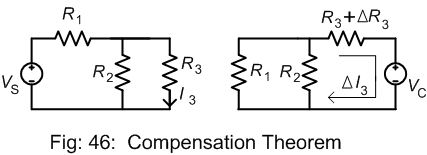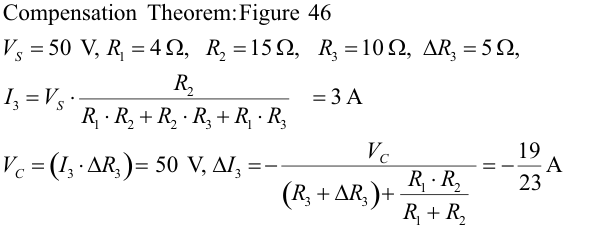Behavior of circuits
Compensation theorem is a very useful theorem. It reflects the changes that can occur due to incremental changes in the value of a component. This theorem is illustrated by the circuit in Fig. 45.
.
Let the resistance change by a small amount. Its effect can be computed as shown. The effect can be computed by the response due to a voltage source VC , the value of which is obtained as shown below.
From equation (73), cancel the common term on both sides of equation. Then we obtain equation (74). The value of compensating voltage VC is obtained as shown by equation (75). The change in current is also obtained, as shown.

Compensation theorem is illustrated by an example. For the circuit in Fig. 46, obtain current I3. Let the value of resistor R3 change by a small value. Compute the change in current I3.

The values of components are specified. The value of current I3 is obtained as shown. The value of compensating source VC is then obtained and the change in current I3, denoted by DI3, is obtained and its value has been shown above.


I think that this theorem is useful in order to calculate the short circuit current in an specific place, given the short circuit level upstream, and the impedance between teh two points.
I M TAKING ABOUT COMPENSATION THEOREM.
very bad description is given on website.u have just put some equation which can be done by a12 year old child.